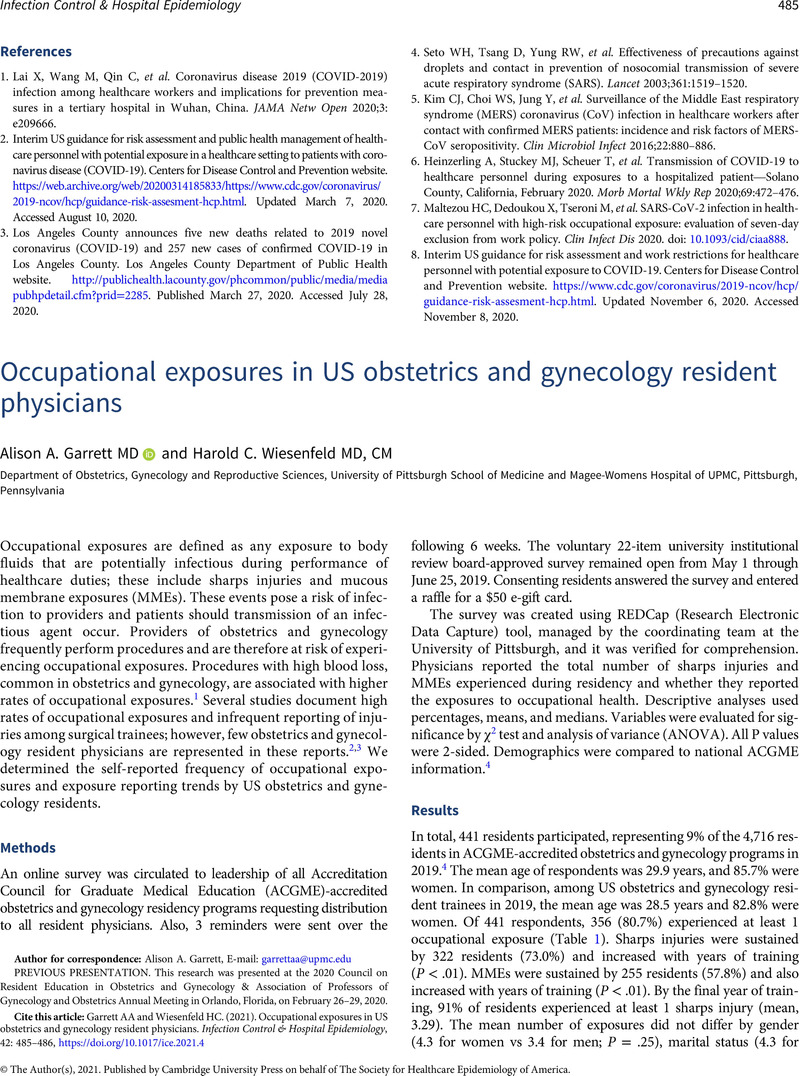No CrossRef data available.
Published online by Cambridge University Press: 11 February 2021

PREVIOUS PRESENTATION. This research was presented at the 2020 Council on Resident Education in Obstetrics and Gynecology & Association of Professors of Gynecology and Obstetrics Annual Meeting in Orlando, Florida, on February 26–29, 2020.